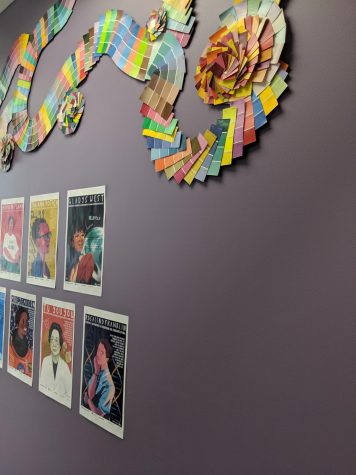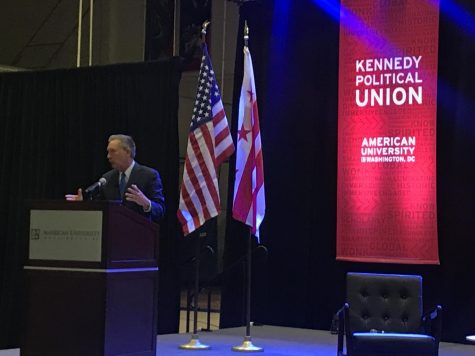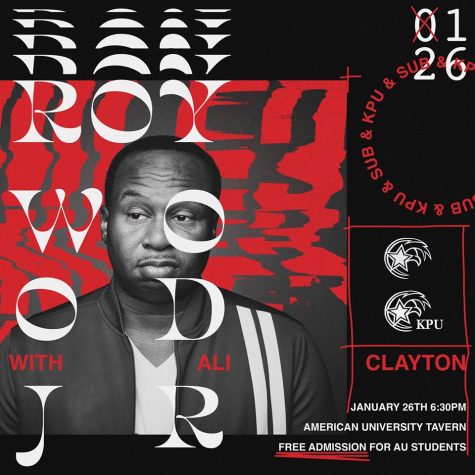Stadium Sparks Gentrification Concerns: UNITED WE LEAVE

Just a block away from the Navy Yard-Ballpark Metro station stands Nationals Park, which casts a long shadow over the scattered development around. It is surrounded with the usual trappings of large entertainment centers: clean sidewalks culminating in a few chain restaurants. Walk in any direction away from the stadium and you’ll be in the Southeast DC that tourists and college newcomers alike are warned about.
In the months leading up to the stadium’s construction, DC residents were promised a “Stadium District” with shopping centers and condos. It would be like a Chinatown or Columbia Heights, flush with new revenue. For the most part, this promise was unrealized.
The District now plans to replicate this strategy hardly a mile away from Nationals Park, this time opting to build a stadium for DC United, the District’s Major League Soccer franchise.
United has its eyes on a large plot of land in Buzzard Point, a neighborhood in Southwest DC that has become a hotspot for development in recent years. Although the stadium plan was not fully approved until DC Mayor Muriel Bowser assumed office, it was proposed by outgoing Mayor Vincent Gray as a final marker of his legacy.
Once home to small industries that lined the Anacostia River of yesteryear, Buzzard Point now holds a great deal of unused space, including the husk of an old chemical refinery.
In addition, it’s also home to many lower income residents. The United stadium would not be the first large organization in the neighborhood. Developers such as Akridge Real Estate and Pepco already have large claims where the proposed stadium would be. The DC City Council rejected a land swap with Akridge that would have given the company the Reeves Center municipal building on U Street NW, so now the city must negotiate a deal with Akridge and Pepco or claim eminent domain to expropriate the land.
Initially, D.C. United’s management and DC’s City Council struck a deal in which the city unanimously agreed to assign $140 million to cover some of the costs of the stadium’s construction. These funds were expected to be matched by United to some extent. The franchise would also get a tax abatement from the city, which would allow it to sidestep 20 years of tax payments totalling $43 billion. This proposal would make this stadium the most expensive facility in Major League Soccer.
According to Neil deMause, author of the book “Field of Schemes,” stadiums are often funded via these methods. “Local governments have used general fund revenue, sales taxes, hotel taxes, business taxes, land swaps, property tax breaks, lottery and gambling revenues, you name it,” deMause said. “The only standard approach is to keep cycling through different proposals until you find one that people don’t complain too loudly about.”
In his book and on his blog of the same name, deMause writes about the kinds of backroom deals and concessions involved in the making of sports stadiums and how taxpayers and social spending are often on the hook to pay for them. According to deMause, roughly $2 billion of tax revenue is used in the construction and maintenance of stadiums in the U.S. each year.
Proponents of these developments tend to ignore costs paid by taxpayers and are quick to point to the wealth and investment that tends to follow. According to ThinkProgress reporter Travis Waldron, Nationals Park failed to bring about this neighborhood development.
“If you accept that Nats stadium was good for the city, then add on that we need a new D.C. United stadium right next to it, you’re essentially admitting that the economic impact did not stretch more than three quarters of a mile,” Waldron said. “I want United to stay around. I’m a soccer fan. But should we spend this money [on the stadium] when we’re trying to replace [the] D.C. General Homeless Shelter, update our transit and invest in affordable housing? These have been long-term priorities that we didn’t stop to think about.”
Empower DC organizes low-income communities and gives them a platform to advocate for their needs. Although the group has not organized a specific campaign in response to the stadium proposal, Daniel del Pielago, a community organizer there, says that the organization sees the stadium as a part of a larger effort to push low-income residents out of the District.
“The sports and entertainment industries are as guilty of trying to gentrify the city as the school closures and cuts to affordable housing that we fight,” del Pielago said. “It’s something we see as tied to the push-out of certain wards in the city, although [Empower DC] may not have the capacity to engage in some of these battles.”
“Should we spend this money [on the stadium] when we’re trying to replace [the] DC General Homeless Shelter, update our transit and invest in affordable housing?”
Buzzard Point is home to three low-income public housing installations: Syphax Gardens, James Creek and Greenleaf Gardens. If the new stadium goes as planned, residents of these areas could find themselves pushed out by the influx of pricey development that would follow. In September, a group of community organizers acting on behalf of these residents pressured D.C. United’s ownership and the City Council to set aside five million dollars for payments to the surrounding community.
Organized by DC’s Fiscal Policy Institute, the groups demanded that the District’s government use these funds for infrastructural improvement, job training programs and a host of other services that would allow Buzzard Point residents to reap some sort of benefit from the new stadium.
The City Council conceded by allotting $4.5 million for community spending, but according to Washington Post reporters Johnathan O’Connell and Mike DeBonis, most of this money will likely be used to fund a new Circulator bus route, designed to get sports fans from Northwest in and out of Buzzard Point without hassle.
According to the DC Fiscal Policy Institute, the average rent in the District has more than doubled since 2000. At the same time, the average income of the city’s poorest 20 percent has fallen dramatically, with most falling well short of the $85,000 a year necessary to meet all the living costs of a family of three in the DMV area. Despite outcry by groups representing the city’s poorest residents, developments continue at a breakneck pace.
According to deMause, Buzzard Point residents will be forced to leave their neighborhood.
“You can definitely try to reduce the risk of displacement, but it’s invariably hard in a market like DC today—the safest bet is to promote incremental growth that allows a neighborhood to react to slow change,” deMause said.
“I can’t see how a soccer stadium ever benefits the community it’s in—it’s just a big empty box that has a flood of people visiting it for a few hours maybe 30 times a year. As far as being a good neighbor goes, I’d rather have a decent supermarket any day, even if that’s less flashy.”






